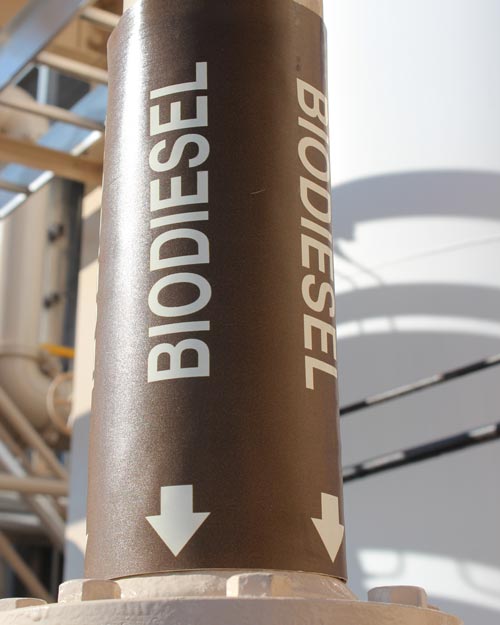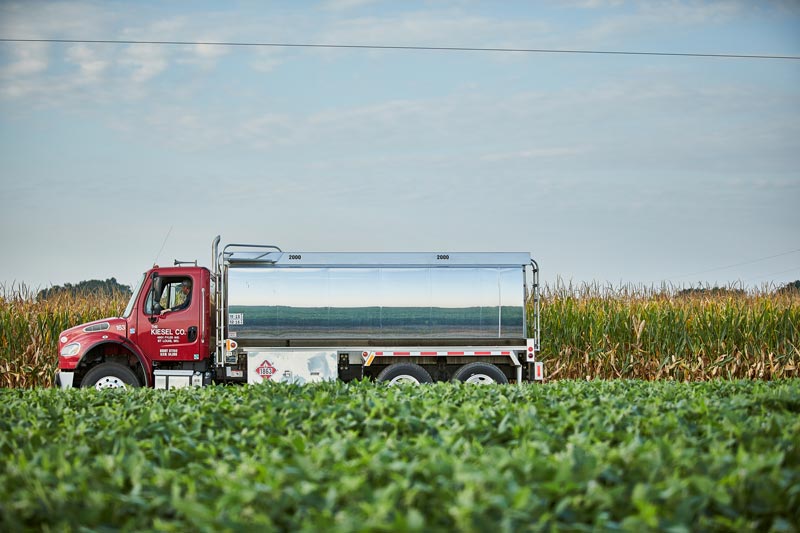
Report explores commercial vehicle lubricant quality in Asia
Asia’s on-highway commercial vehicle fleet numbers have exploded in recent years. The vehicle parc has grown from an estimated 13 million in 2015 to more than 20 million in 2019. “Hand-me-downs” of older vehicles have seen a wide age profile develop throughout the region.
Older engine lubricants are unsuitable for use in modern vehicle fleets. Global standards providers, such as the American Petroleum Institute (API) and the European Automobile Manufacturers’ Association (ACEA) have been upgrading specifications to match the requirements of modern engines. However, the move to higher-tier lubricants has not kept pace with the influx of new vehicles entering regional markets, according to a recent whitepaper released by the Asian Lubricants Industry Association (ALIA).
The whitepaper, “An Investigation of On-Highway Commercial Vehicle Lubricant Quality in Key Asian Markets” considers the oil quality levels used in commercial vehicles in the four most populous Asian vehicle markets — China, India, Indonesia, and Thailand. Produced with data from Lubrizol Market Intelligence, the whitepaper emphasises the impact of engine hardware changes and exhaust aftertreatment devices on engine lubricant quality and advises that the volume of older lubricants in use is a concern in the Asian market.
Inferior oils not only impact the emissions performance of an engine, but they can also result in increased maintenance, expensive repair bills, or even catastrophic engine failure. The ALIA report outlines how damage can be exacerbated due to the inclusion of exhaust aftertreatment devices.
Over the past few decades, original equipment manufacturers (OEMs) have made significant changes in vehicle hardware as they strive to produce more powerful and efficient vehicles. Much of this continuous innovation has been prompted by governments and legislative bodies adopting stringent emissions standards to reduce the harmful environmental impact of vehicle emissions. Asia has increasingly adopted the popular Euro emissions standards or equivalent legislation, such as China VI and Bharat Stage VI in India.
Turbocharging has created more severe operating environment
Noteworthy engine hardware changes have been employed to achieve lower emissions include exhaust gas recirculation (EGR), which reduces nitrous oxides during the combustion process. EGR has been associated with soot formation, lubricant viscosity increases, greater abrasive wear, and higher corrosion through mineral acid formation. The lubricant used with EGR must be specifically formulated for improved soot control and greater abrasive wear protection. A trend towards greater power densities through turbocharging has also created a more severe operating environment for engine oils.
Heightened focus on particulates emitted from exhausts has seen the introduction of exhaust aftertreatment devices, including diesel particulate filters (DPF) for heavy-duty and light-duty vehicles. DPFs are designed to capture and store exhaust soot, which is burned off periodically to regenerate the filter. A dedicated low SAPS (Sulphated Ash, Phosphorus, and Sulphur) lubricant formulated to minimise blockage and damage of the DPF is critical with this technology.
Selective Catalytic Reduction (SCR) is another vehicle innovation from OEMs to reduce harmful combustion by-products from diesel vehicles. SCR converts harmful nitrogen oxides into diatomic nitrogen. However, phosphorus can poison the catalyst. Lubricants formulated with lower phosphorus, sulphur, and other metallic-based additives are essential.
Disparity between recommended oil quality and engine oil in use
The ALIA whitepaper highlighted a disparity between recommended oil quality and the engine oil in use in all four markets assessed.
China has the largest and most modern vehicle fleet in Asia. The fleet comprised an estimated 18 million units in 2020, 50% of which were less than five years old. A further 32% were between five and 10 years old. Despite the high percentage of modern vehicles, Lubrizol data indicate very little top-quality lubricant is used in the country. Just 3% of the market is utilising API CK-4, the latest engine oil standard issued by API in December 2016, and there is minimal use of API CJ-4. API CI-4, introduced in 2002, as the first API oil service category for diesel engines using cooled EGR, accounts for 43% of engine oil sales.
A significant proportion of vehicles less than 10 years old are using API CH-4 lubricants (30%), indicating a disparity with recommended oil quality. API CH-4 was introduced in 1998 and superseded in 2002. The report also cited concerns over the volumes of API CF-4 and lower oil usage — which constitutes 30-year-old technology. Only 8.7% of the fleet is compatible with these older lubricants, despite accounting for 23% of lubricant use.

Like China, India has a modern commercial fleet with 80% of vehicles less than 10 years old. While we would expect API CJ-4 and CI-4 to make up a similar percentage of engine oils, API CH-4 is the highest category selling in India (42%), according to the ALIA whitepaper. API CJ-4 and CI-4 only lubricate 26% of India’s total commercial vehicle fleet. The whitepaper stresses that API CH-4 is incapable of managing soot levels in modern engines. API CF-4 and earlier oils are also sold disproportionate to the vehicle parc demographics in India.
In Indonesia, 72% of commercial vehicles are older than 15 years old, making it one of the oldest vehicle fleets in Southeast Asia. 22.5% of vehicles are less than 10 years old, requiring at least API CI-4 or higher, however API CI-4 only encompasses 10% of Indonesia’s total lubricant sales. The ALIA report also suggests a lack of API CJ-4 engine oils may be attributed to high sulphur levels found in the available diesel fuel in the country. The disparity between used and recommended engine oil continues in Thailand. Only 40% of heavy-duty diesel motor oils sold are API CI-4 quality or higher, despite 55% of Thai heavy-duty vehicle fleets being less than 10 years old.
Most countries are seeking alternatives to fossil fuels. The Southeast Asian market has turned to biodiesel to reduce emissions and improve energy security, with Indonesia, the largest palm oil producer in the world, most aggressively promoting biodiesel uptake. Indonesia is currently at B30 (30% biodiesel) and plans to move to B40. Malaysia is also considering a mandate of B20 biodiesel.
Biodiesel presents additional complications
Biodiesel presents additional complications for engines and lubricants, including higher levels of fuel dilution. The lower volatility of biodiesel can cause a change in the lubricant’s viscosity and wear problems. Older vehicles are at a greater risk of lubricant oxidation, and biodiesel can cause higher levels of sludge and other harmful deposits. Corrosion is also a common issue due to the presence of an acid catalyst to promote the esterification process.

The disparity between recommended and in-use oil is exaggerated considering the widespread biodiesel use, according to the ALIA whitepaper. Appropriate oil quality must be adopted with the broader use of biodiesel. A new engine test, the CEC L-109 biodiesel oxidation test, has been developed and is included in new specifications by OEMs. The test measures oil thickening and examines the products of oxidation through spectral analysis. The ALIA whitepaper emphasised the importance of using the latest specifications that include the biodiesel oxidation test, to negate the negative impact of biodiesel and avoid damage to engine components. All four of the ACEA 2016 sequences require a pass result in the CEC L-109 biodiesel oxidation test. Careful consideration should be given to the benefits of formulating heavy-duty engine lubricants according to the appropriate ACEA specification, says ALIA.
In the whitepaper, ALIA calls for further examination and debate on the practice of marketing and selling lubricants based on older specifications. Minimum quality levels that prohibit the sale of lower quality lubricants have already been established in some parts of the world, including Brazil, Saudi Arabia, and Angola. Such a move might likewise be appropriate in these Asian countries, given their detrimental effects on the engine, but more importantly on the environment, as the use of inappropriate lubricants could harm the exhaust aftertreatment devices.
The whitepaper includes several recommendations to address disparities in oil use observed in the Asian region, including education on oil quality, specifications, and the consequence of using an incorrect lubricant.







